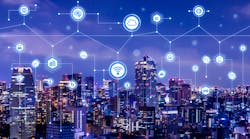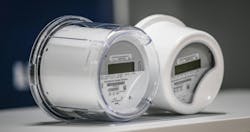Remember when the internet of things (IoT) was the new kid on the block? It’s only been about 20 years ago since the term was coined. That can be stretched by another 20 years if the students who wired a campus Coke machine to a network are considered. They wanted to know the number of Coke cans in the machine and how cold they were without walking to the machine, but that’s another story.
What started me thinking about IoT technology was a report I had stumbled upon the other day. According to Statista, “The total installed base of IoT connected devices worldwide is projected to amount to 30.9 billion units by 2025, a sharp jump from the 13.8 billion units that are expected in 2021.” That’s a lot of connectivity in a relatively short period of time, but the technology has become an important component of today’s digitalization. IoT has also undergone a great deal of specialization in the process became consumer IoT, commercial IoT, industrial IoT, utility IoT, and the list grows.
Like everyone, I have a lot of IoT devices in my home ranging from simple to complicated, but my favorites are the more complex. I have an autonomous robot vacuum cleaner that sends texts when needing help (i.e., it gets trapped under furniture). My IoT doorbell streams video to my phone 24/7. I have actually answered my door from over 2,000 miles from home in Quebec City. Manufacturers are infusing IoT technology into all of their products and the technology is getting more sophisticated.
IoT Matures
Recently a friend and coworker told me about an experience he had with a new IoT-enabled appliance. The appliance developed a problem, so he called customer support. That is when IoT made things interesting and a little different. The technician had him download an app to his smartphone. Next, the technician told him to point the phone at the appliance, and press a button.
Through the marvels of digital technology, a technician halfway across the country was able to troubleshoot the appliance and fix the problem. The technology was able to correct the trouble without sending a service technician to the appliance. This feature has been available on the smart grid for a number of years, but I was surprised to hear about it being used in consumer electronics.
Utilities routinely can connect or disconnect service remotely through a smart meter without rolling a service truck to the location. Manufacturers have been supplying grid equipment with built-in monitoring for years, and it’s certainly needed. Back in the day it was a real challenge to instrument power apparatuses such as transformers, circuit breakers, etc. I still have memories of the process that was required to add monitoring systems to equipment in the field.
Built in IoT
One job that stands out in my mind was retrofitting a 600 MVA transformer with a monitoring system to keep an eye on all the vital subassemblies of the transformer. The technology was primitive by modern-day standards, and it was expensive, not to mention the huge amount of raw data that it produced, but that has all changed.
Advancements in digitalization allow utilities to order equipment direct from the factory with all the IoT technology an integral part of the equipment. Not only is the technology built-in, it’s connected to cloud-based computing necessary to convert the big-data generated by the IoT sensors and monitors into actionable information. It is an alignment of IT (informational technology) and OT (operational technology) and it’s changing the landscape of the smart grid.
This topic was the subject of the November 2020 “Charging Ahead” article “The Bits And Pieces Are Getting Smarter.” I talked with Puneet Singh, vice president of digitalization at Siemens Energy Transmission, and Matthias Heinecke, head of product digitalization switching products at Siemens Energy Transmission about Siemens digitally connected equipment. They had some interesting insights into these applications, but space doesn’t permit repeating the story, so here is a link https://tdworld.com/21143157 for anyone interested.
Because of the growing utilization of IoT technology on the power grid, the IT side of the utility is connecting to the OT portion, making the electrical power system smarter. I’d call it the next generation of our smart grid, but this technology is available as off-the-shelf choice. The trend in the smart grid is increasing digitalization and IoT is changing the landscape. It will be fun to see where it goes!


